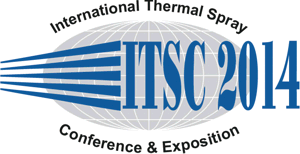
|
3761 |
|
Wednesday, May 21, 2014, Hall H1 & H2 4:29 PM "Young Professionals" |
|
Development and high-temperature behavior of oxide-dispersion-strengthened bondcoats |
|
Francesco Bozza* / Università degli Studi di Modena e Reggio Emilia, Facoltà di Ingegneria , Italy Robert Vaßen / Forschungszentrum Jülich GmbH, Germany Mitsutoshi Okada/ Central Research Institute of Electric Power Industry, Japan Luca Lusvarghi/ University of Modena and Reggio Emilia, Italy Giovanni Bolelli/ University of Modena and Reggio Emilia, Italy Doris Sebold/ Forschungszentrum Jülich GmbH, Germany Daniel Emil Mack/ Forschungszentrum Jülich GmbH, Germany Philipp J. Terberger/ Forschungszentrum Jülich GmbH, Germany Willem J. Quadakkers/ Forschungszentrum Jülich GmbH, Germany |
|
During the past years many investigations have been performed to improve thermal barrier coating (TBC) systems. The dispersion of oxide particles within the bondcoat seems to be promising for the improvement of the TBCs high-temperature behavior. Oxide-dispersion-strengthened (ODS) materials are composite systems based on a ductile phase, used as a matrix material, alloyed with a hard phase, used as a strengthening media. Specifically, ODS-MCrAlY bondcoats are usually obtained by thermal spraying of ODS powders produced by mechanical milling. The milling parameters and the deposition conditions have a strong influence on the microstructure and on the properties of the ODS materials. Therefore the present work aims to investigate the effect of the feedstock powder composition and of the deposition conditions on the high-temperature behavior of ODS bondcoats, in comparison to standard TBC systems. ODS bondcoat were deposited by high-velocity-oxygen-fuel (HVOF) and air-plasma-spray (APS) on Inconel-738 substrates. The feedstock powders were produced by high-energy-attrition milling, varying the process parameters and the hard phase amount. Commercial CoNiCrAlY and Al2O3 powders were used as ductile phase and strengthening media respectively. The high-temperature behavior was evaluated by means of isothermal oxidation and thermal cycling oxidation tests. The characterization analysis focused on the comparison between TBC containing a standard bondcoat and TBC containing ODS-bondcoats. Furthermore, hybrid TBCs, based on a thin ODS-bondcoat layer deposited above a standard bondcoat, were tested. |